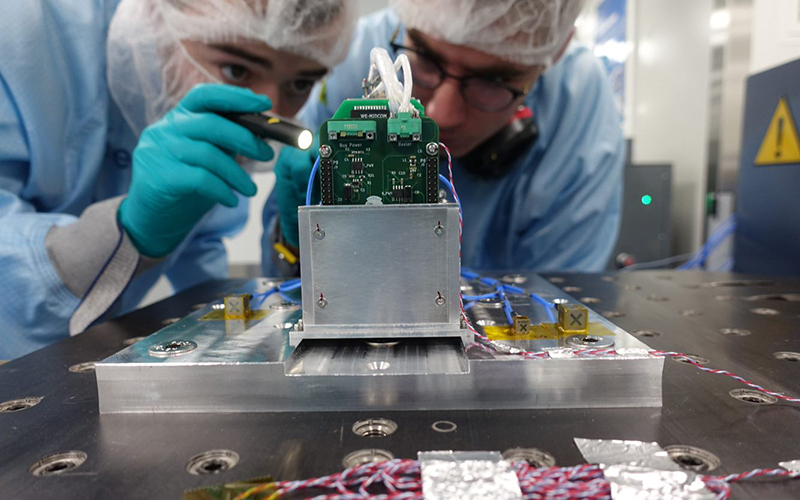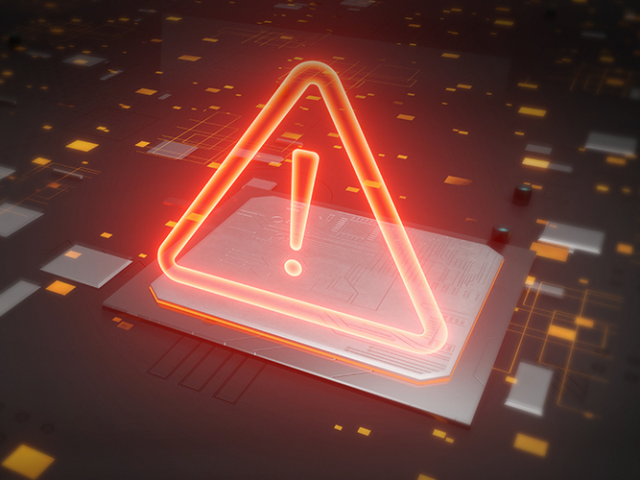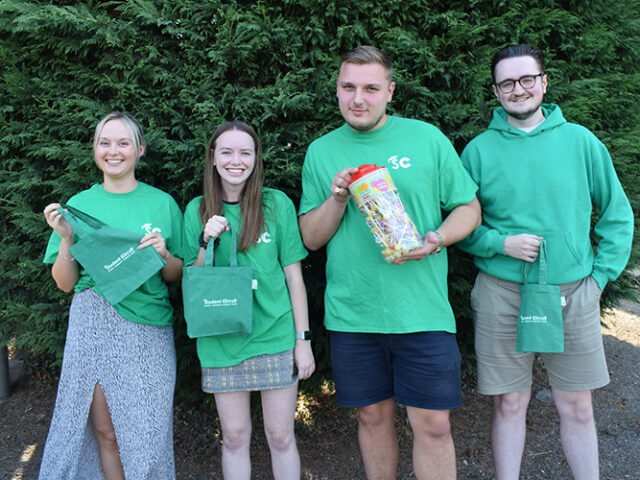University of Bristol students have spent a month at the European Space Agency testing their satellite in the brutal conditions it will face in space.
The satellite is designed to monitor active volcanoes and make 3D models of their ash clouds. As well as improving our understanding of volcanoes, this information could save the aviation industry millions by helping to keep planes in the air after an eruption.
But to do that, the satellite first needs to withstand the hostile environment of space, including extreme vibrations during launch, an airless vacuum and temperatures ranging the very hot on its sun-facing side to the very cold on its space-facing side.
Since work began on the University of Bristol satellite programme seven years ago, more than 200 University of Bristol students – mostly engineering, physics and earth sciences students – have been involved. They range from first years to PhD researchers and are supported by a small team of the University’s field-leading professors.
The University’s Faculty of Engineering, School of Physics and School of Earth Sciences are consistently ranked among the best in the world.
Over the past month, eight students have been at the European Space Agency’s CubeSat Support Facility in Transinne, Belgium, which is one of the few places in Europe that has the multi-million-pound facilities needed to simulate space.
The tests are the culmination of thousands of hours of research, testing and trial builds at the University.
At the European Space Agency, the students’ ‘payload’ – the part of the satellite that holds the volcano imaging equipment – was shaken with violent vibrations before being plunged into a thermal vacuum chamber and subjected to extremes of temperature and pressure.
George Burns, an Electrical and Electronic Engineering student in charge of the electronics, said: “To work on a satellite that could go into space is amazing, and we’ve learnt so much along the way about engineering and teamwork – it’s been invaluable.
“I’ve also learnt that this is what I want to do for the rest of my life: build satellites and send them into space. I even find the paperwork interesting, that’s crazy to me.”
At 20cm by 10cm by 10cm, the payload is around the size of a standard house brick. But its two cameras – one ultra-high definition and one infrared – are capable of tracking and modelling ash clouds in ways that haven’t been tried before.
James Hollingdale, an Aerospace Engineering student testing the payload’s resistance to vibrations, said: “Building satellites in not something many universities do – getting involved in space projects like this was why I picked Bristol for my university.
“We have great equipment in our labs at Bristol, but at the ESA (European Space Agency) we can do industry-standard testing and that gets us closer to getting the satellite into space.”
Unlike space companies with billion-dollar budgets, the students do not have unlimited funds and can’t throw money at engineering problems. Instead, every material that goes into the satellite must be meticulously researched and tested.
Tom Snelling, an Aerospace Engineering student who is project managing the team, said: “I always wanted to be involved in the space industry, but I never dreamt I could be testing at the European Space Agency as a student.
“Being on the project totally changes students. You have undergraduates joining and within a year they are coding satellites and getting real industry experience – it’s really impressive what they can do.”
Testing on the satellite is ongoing. They hope to launch it into orbit in early 2024.
Prof Lucy Berthoud, Professor of Space Systems Engineering at the University of Bristol, who is supporting the students, said: “Few UK universities build satellites, this payload is really ambitious. If it’s successful it will revolutionise our understanding of ash clouds.
“To do this, the students have been learning hands-on skills to build and test a satellite which will equip them well for positions in the space industry when they finish.”




